The Foreigner’s Guide to French Cheese Etiquette
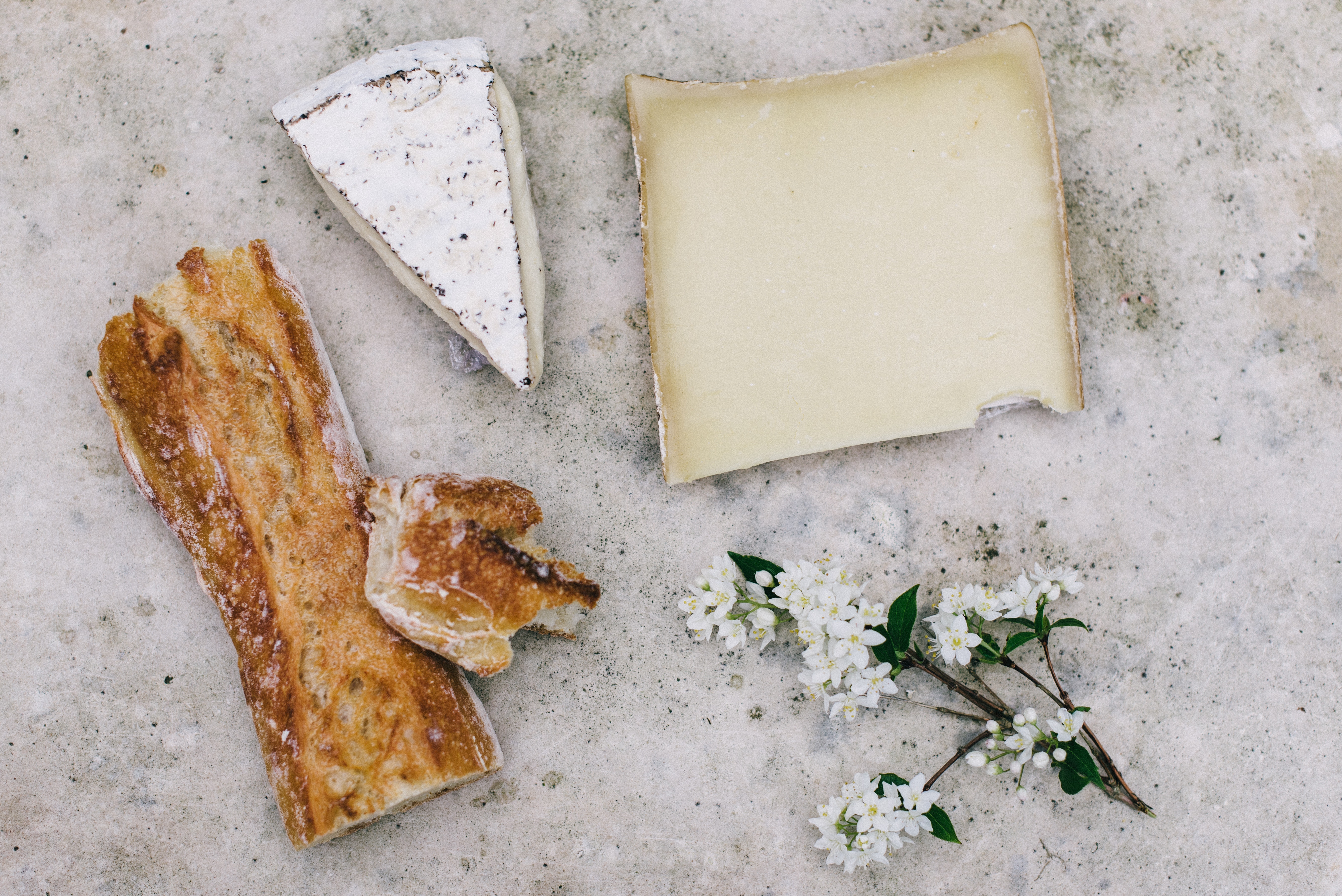
Cheese is so important in France, even the citizenship test includes a couple questions on fromage. French cheese etiquette involves correct times, orders and methods that as an American I never had to learn to operate in society. But cheese manners matter here, so if you’re planning a trip or a move it’s good to learn the basics.
Before meeting my husband I didn’t really like cheese, which is basically grounds to get me kicked out of France. But over the years I have learned to appreciate cheese and picked up the social know-how that doesn’t require studying animals and French geography.
Just as with everything else in France, there are rules around cheese. But with a few tips, you can easily navigate French cheese culture…or at least not embarrass yourself.
WHEN TO EAT CHEESE IN FRANCE
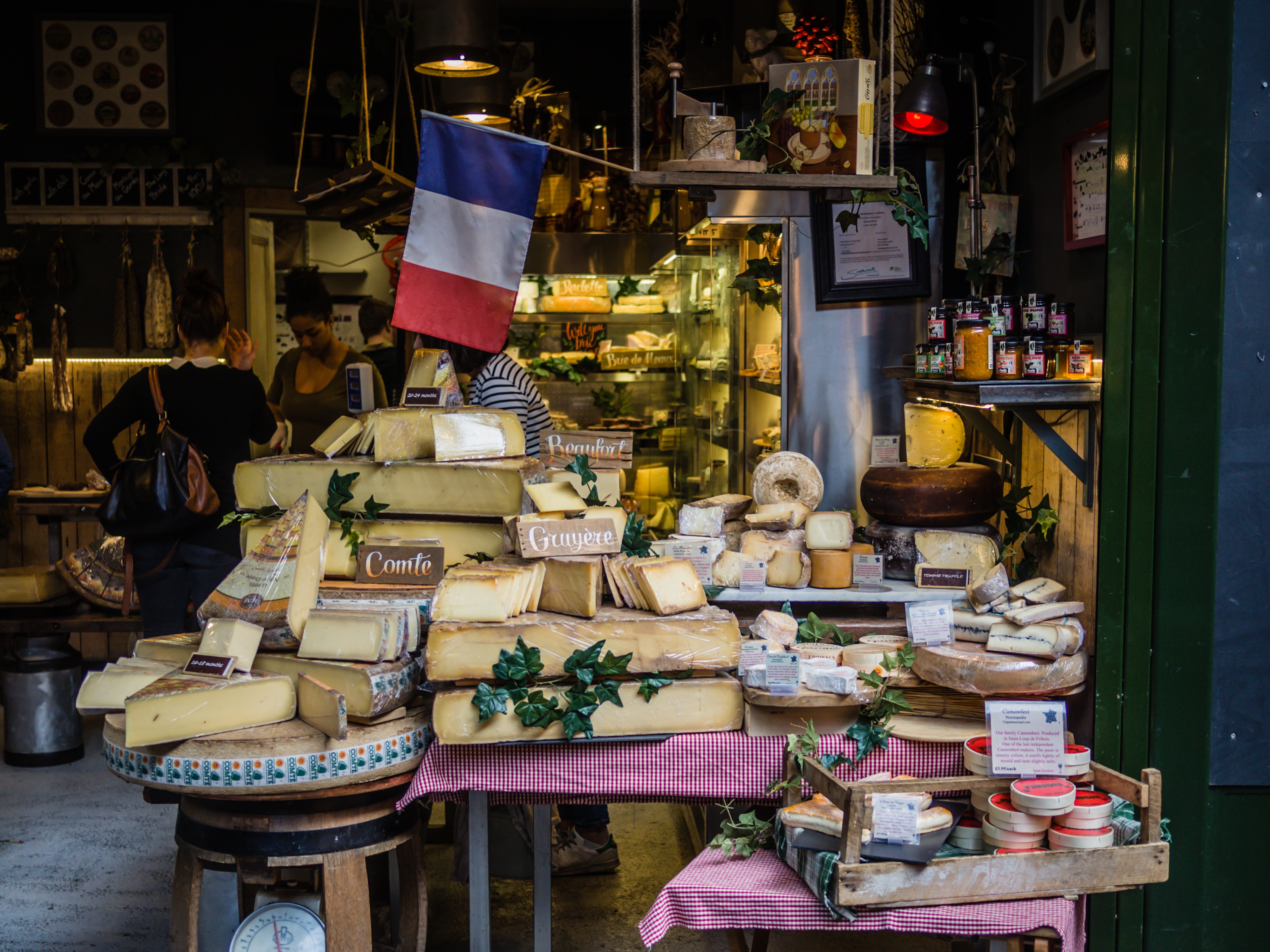
Cheese is not an appetizer here. In France, the traditional time to eat cheese during a meal is after the main dish and before dessert. Yes, it gets it’s own course, though you can eat it in lieu of dessert also if you wish. French people don’t eat cheese at every meal– it’s more common during dinner and weekend lunches.
You may be offered cheese before dinner at an apéro or if you’re at a party where there isn’t a formal sit down meal and everyone is grazing. An apéro (from the word apéritif) is a French social gathering where drinks and snacks are served that doesn’t exactly translate in Anglo-Saxon culture. If you are invited to one, cheese is an appropriate offering to bring.
THERE IS A CORRECT ORDER TO EAT CHEESE
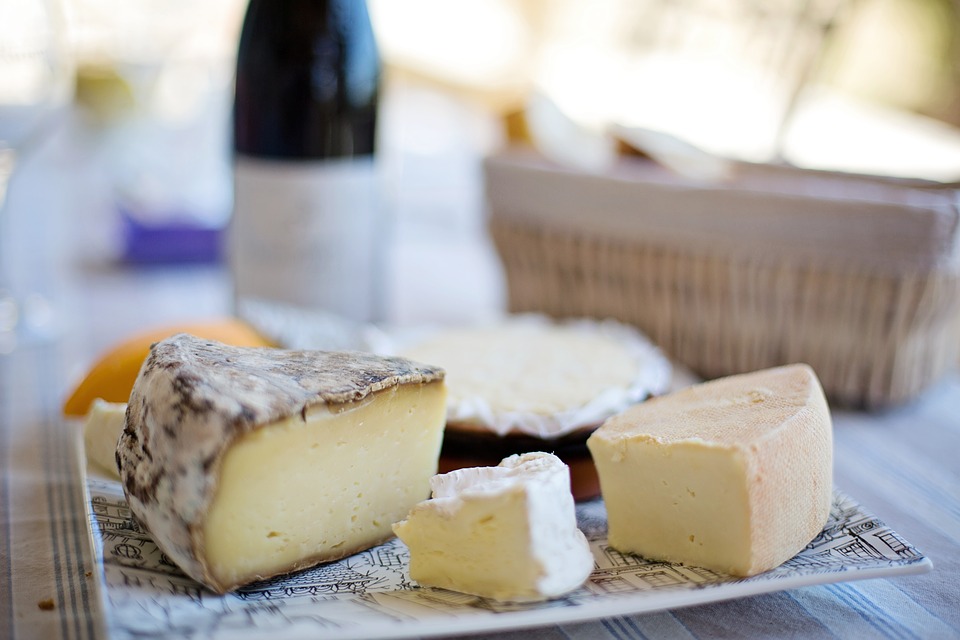
Don’t worry, no need to memorize every variety of cheese in order to understand this. Basically, the “correct” order to eat cheese in France is from the most mild (light flavored) to the most strong (stinkiest). So you’ll usually start with the cheese that is very light colored and has little smell such as a comté or a goat cheese, and then work your way up to the blue cheese. Blue cheese is always last.
The reason for this ordering is that the stinkier the cheese, the more it takes over your taste buds. If you start by chowing down on a pungent blue right off the bat, your palate is going to get blown out by the flavor, and you won’t be able to properly taste the more subtle, mild cheeses anymore. So there is a method to the madness.
HOW TO PROPERLY CUT THE CHEESE
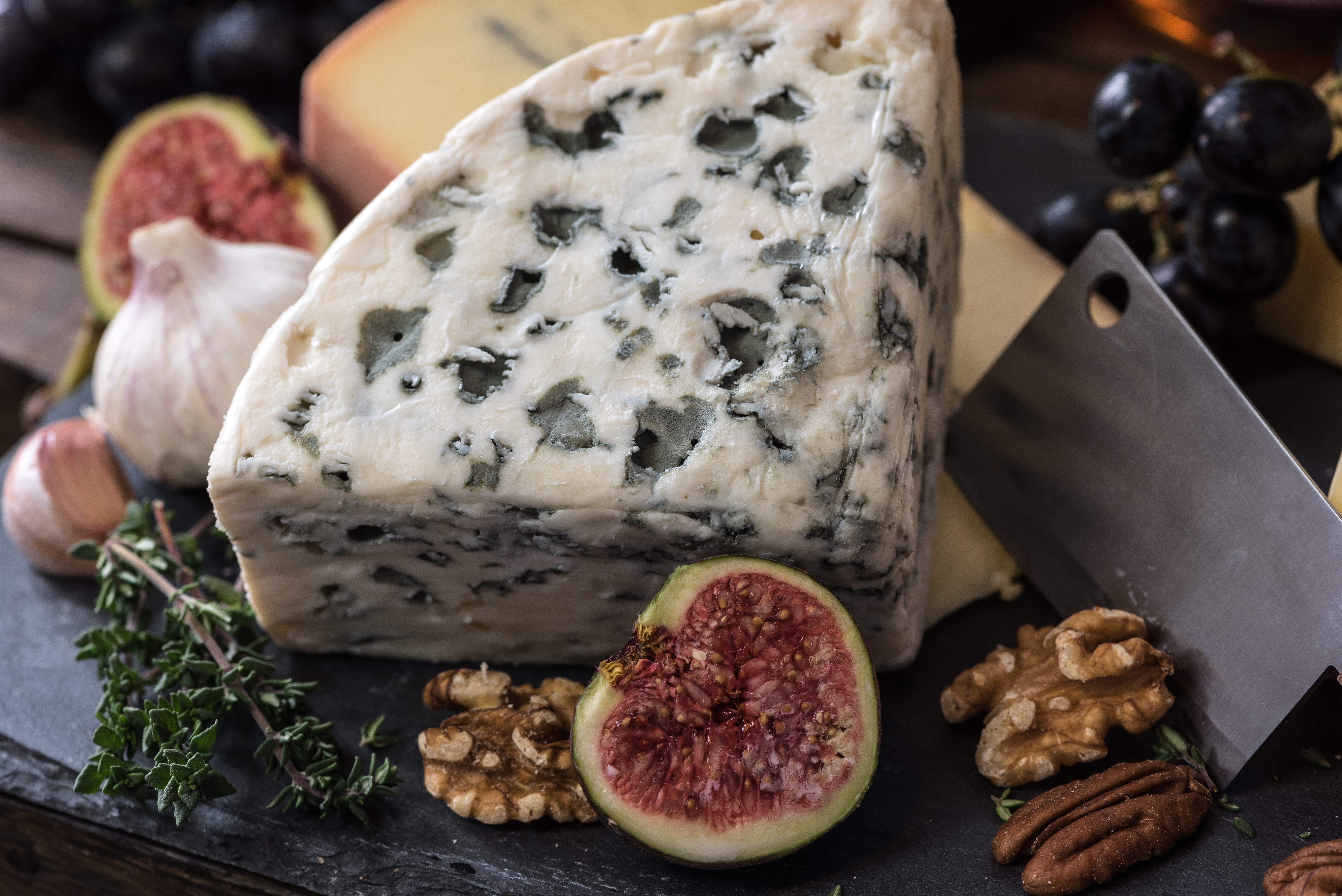
This is the hardest part to master (I’m still working on it), but is essential to proper French cheese etiquette. Unlike in America where cheese is often pre-cut before being shared at a party or dinner, in France cheese is almost always presented whole or in big chunks for you to cut yourself.
Every shape has a proper way to be sliced, and there are more shapes that you would think. Here is a visual reference courtesy of Ile de France Cheese:

The reason each shape is cut differently is because often the center of the cheese is considered the best part, and therefore it would be rude to cut in a way where you took more than your fair share of the center. Also it helps the cheese maintain its shape the best way possible.
A few more cheese cutting tips:
- Don’t try to cut tiny little slivers. It never really works and ruins the shape. A better strategy is to cut a bigger piece and then cut that in half and share with your neighbor or leave for the next person.
- I try not to be the first person to cut into a cheese. It is much easier to follow a lead than to start off a cheese.
- You shouldn’t waste a lot of cheese, so try not to take a lot more than you think you can eat. No problem with going back for seconds.
WHEN TO EAT THE RIND
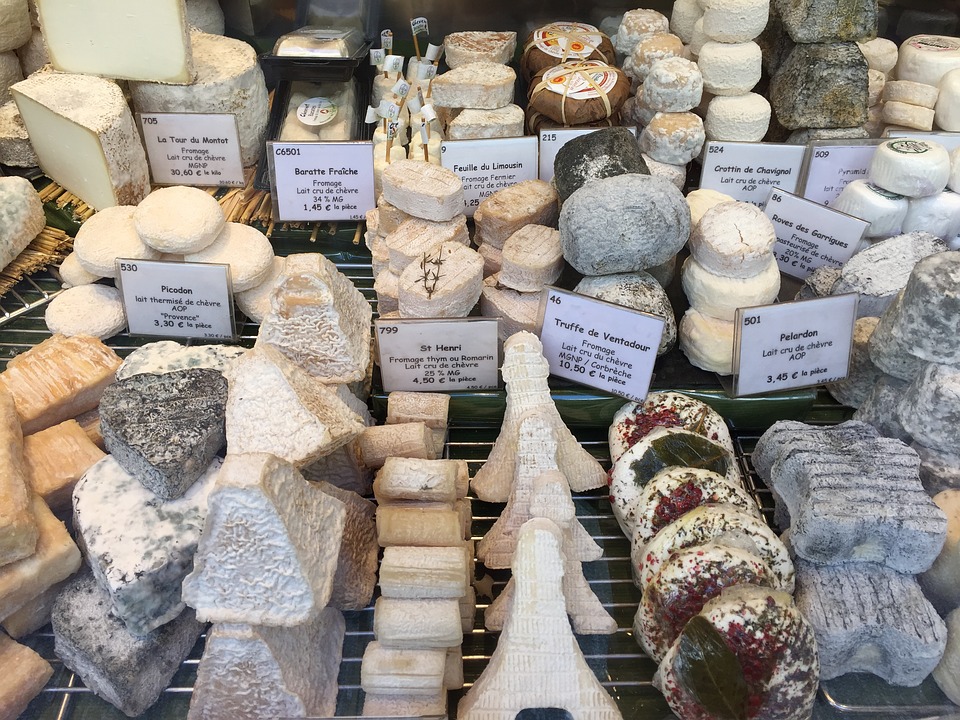
This can be confusing to figure out, but some cheese rinds (the outside part) you are expected to eat and others you aren’t. No rind will kill you, but not all are pleasant.
Here are a few easy to remember general guidelines:
- Hard cheeses: don’t eat the rinds.
- If the cheese is very soft, gooey, or in a wooden box: eat the rind.
- Goat cheese: eat the rind.
- Blue cheese: eat the rind.
- If the cheese has a wrinkly, brain-like textured rind: eat it.
- If the cheese has a spices, herbs or other flavoring on the outside: eat it.
- If the rind is very moldy, especially thick, crusty, or is grey or dark colored: use your discretion. Some people love the flavor of these rinds, some don’t.
If you trim the rind off every single cheese, it isn’t a huge faux-pas, but it is considered a bit childish. Like cutting the crusts off your sandwiches.
AND FINALLY…ACCOMPANYING BREAD ETIQUETTE
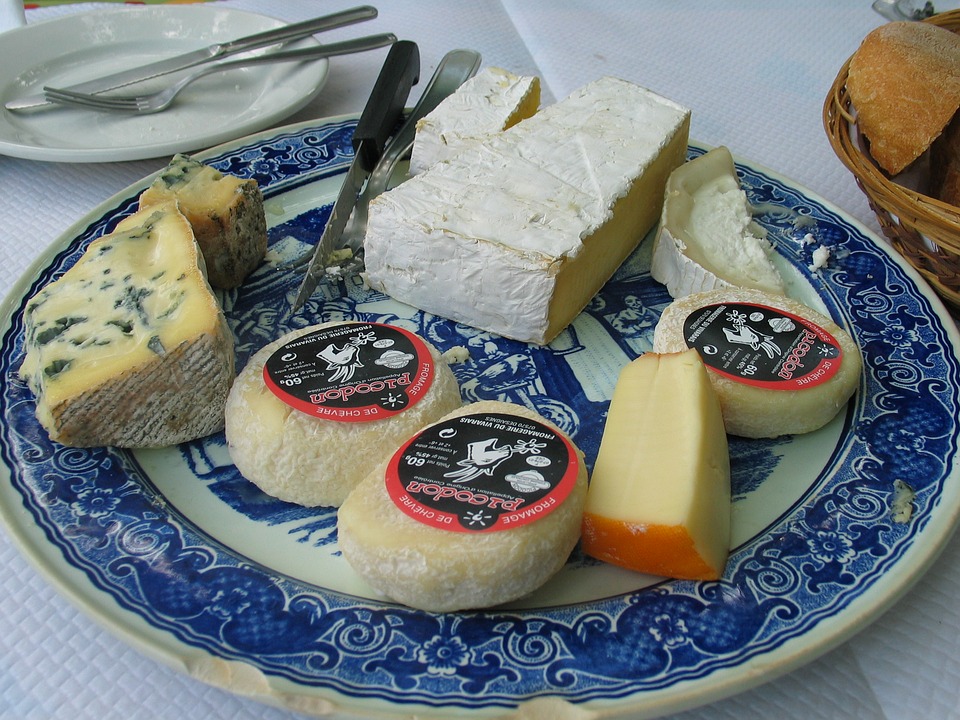
Don’t expect (or ask for) crackers. In France cheese is eaten with bread the vast majority of the time. You should not be eating your cheese with giant chunks of bread or making a sandwich with it. Bread is the sideshow, not the main event. Tear your chunk into smaller pieces to enjoy with the cheese.
And one last, very French tip: Do not put your bread on the plate with your cheese. In France, bread’s correct spot is directly on the table next to your plate. This rule applies to eating in a home or at a restaurant. I don’t know why, it just is the way it is here.
Now you are ready to (properly) eat cheese in France. Bonne chance!
Have any additional tips about cheese? Any funny cheese experiences in France? Leave a comment below and share!

This is my fave fave fave fave post ever!!
xoxop
http://north7thandbedford.com
Thanks P <3
I thought I was fairly cheese savvy, but I’ve learned a lot on this post! Merci beaucoup!
Glad you enjoyed Peggy! Thanks for reading 🙂
Fun post! I’ve been cutting Brie wrong apparently… 😉
This might be a silly question, but do you eat the cheese with a fork? Here I would put cheese on my plate with the serving fork then put it on a cracker with my hands and eat it by hand. Do I put the cheese on the bread or eat the cheese off a fork then take a bite of bread? Thank you for you help.
Hi Susie! You wouldn’t use a fork. If you are seated at a table you would use the knife on the cheese plate to put which ever cheeses you like on your plate, then use the same knife you ate with (after wiping off excess food) to cut/place the cheese on your bread and eat. Sometimes new knives will be provided for this course, but not always. If you are at a party or apero, you would use the knife on the cheese plate to put directly on your bread and eat 🙂
Thank you so much for the lesson. I’m so glad I found your blog.
Great post, to which I came from your answer on Quora… it is very accurate amd helpful. Merci!
Okay, I know this might sound bad, but I bet the vegan cheeses there are amazing. Because in North America some good ones are starting to appear, so I can’t help but imagine you have even better ones there!
Hi Kristen– I personally have never tried vegan cheese, but a vegan friend of mine here says there is in fact a good vegan cheese scene in Paris. The vegan dining options definitely still lag behind NYC and LA, but it is getting better here — and it makes sense cheese would be a priority in France!
Oh, so wonderful to hear–thank you!
That’s good to know that you shouldn’t put the bread and cheese on the same plate. I am thinking about opening a French restaurant and I would want to make it as authentic as possible. I’ll have to make sure to do that if I decide to open it in the future.